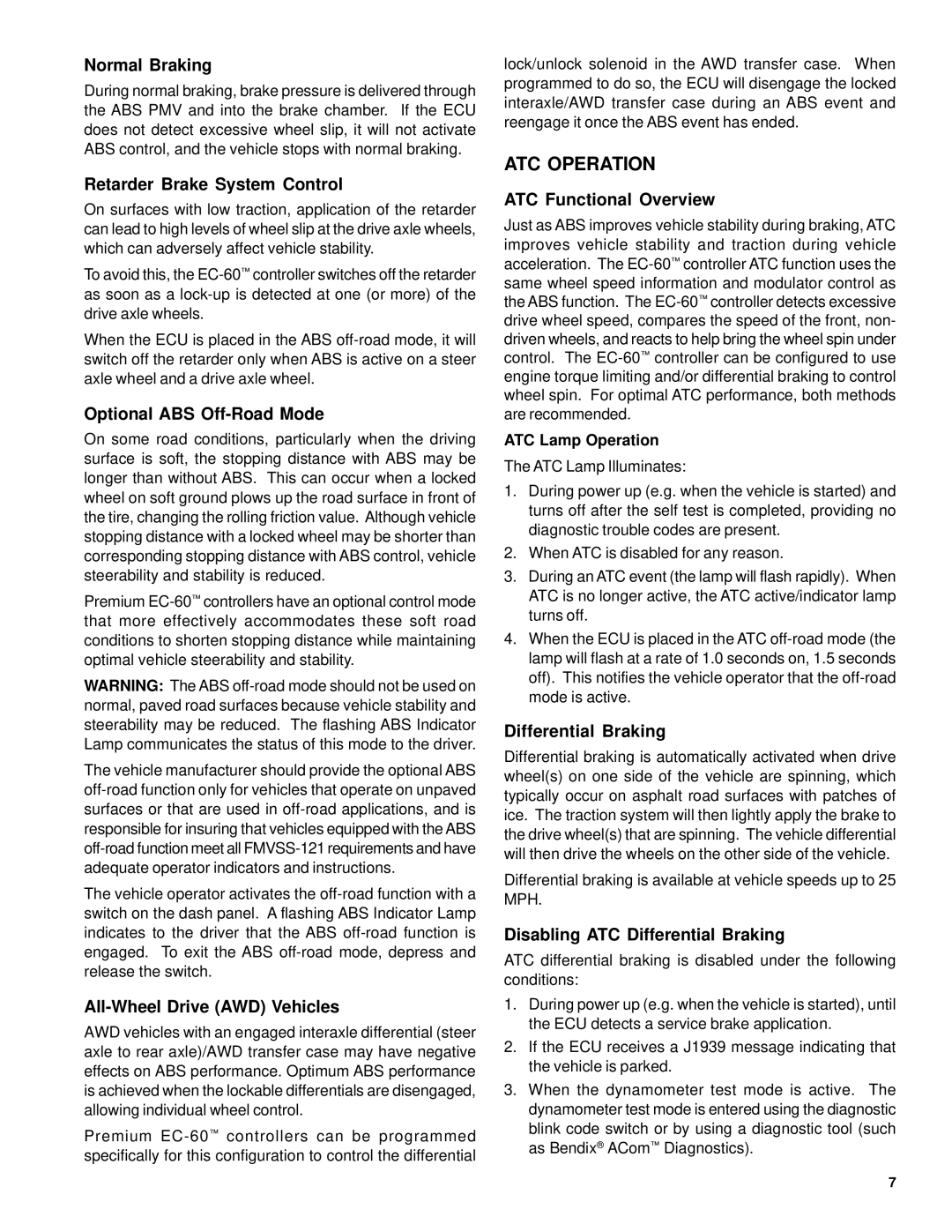Normal Braking
During normal braking, brake pressure is delivered through the ABS PMV and into the brake chamber. If the ECU does not detect excessive wheel slip, it will not activate ABS control, and the vehicle stops with normal braking.
Retarder Brake System Control
On surfaces with low traction, application of the retarder can lead to high levels of wheel slip at the drive axle wheels, which can adversely affect vehicle stability.
To avoid this, the
When the ECU is placed in the ABS
Optional ABS Off-Road Mode
On some road conditions, particularly when the driving surface is soft, the stopping distance with ABS may be longer than without ABS. This can occur when a locked wheel on soft ground plows up the road surface in front of the tire, changing the rolling friction value. Although vehicle stopping distance with a locked wheel may be shorter than corresponding stopping distance with ABS control, vehicle steerability and stability is reduced.
Premium
WARNING: The ABS
The vehicle manufacturer should provide the optional ABS
The vehicle operator activates the
All-Wheel Drive (AWD) Vehicles
AWD vehicles with an engaged interaxle differential (steer axle to rear axle)/AWD transfer case may have negative effects on ABS performance. Optimum ABS performance is achieved when the lockable differentials are disengaged, allowing individual wheel control.
Premium
lock/unlock solenoid in the AWD transfer case. When programmed to do so, the ECU will disengage the locked interaxle/AWD transfer case during an ABS event and reengage it once the ABS event has ended.
ATC OPERATION
ATC Functional Overview
Just as ABS improves vehicle stability during braking, ATC improves vehicle stability and traction during vehicle acceleration. The
ATC Lamp Operation
The ATC Lamp Illuminates:
1.During power up (e.g. when the vehicle is started) and turns off after the self test is completed, providing no diagnostic trouble codes are present.
2.When ATC is disabled for any reason.
3.During an ATC event (the lamp will flash rapidly). When ATC is no longer active, the ATC active/indicator lamp turns off.
4.When the ECU is placed in the ATC
Differential Braking
Differential braking is automatically activated when drive wheel(s) on one side of the vehicle are spinning, which typically occur on asphalt road surfaces with patches of ice. The traction system will then lightly apply the brake to the drive wheel(s) that are spinning. The vehicle differential will then drive the wheels on the other side of the vehicle.
Differential braking is available at vehicle speeds up to 25 MPH.
Disabling ATC Differential Braking
ATC differential braking is disabled under the following conditions:
1.During power up (e.g. when the vehicle is started), until the ECU detects a service brake application.
2.If the ECU receives a J1939 message indicating that the vehicle is parked.
3.When the dynamometer test mode is active. The dynamometer test mode is entered using the diagnostic blink code switch or by using a diagnostic tool (such as Bendix® ACom™ Diagnostics).
7
